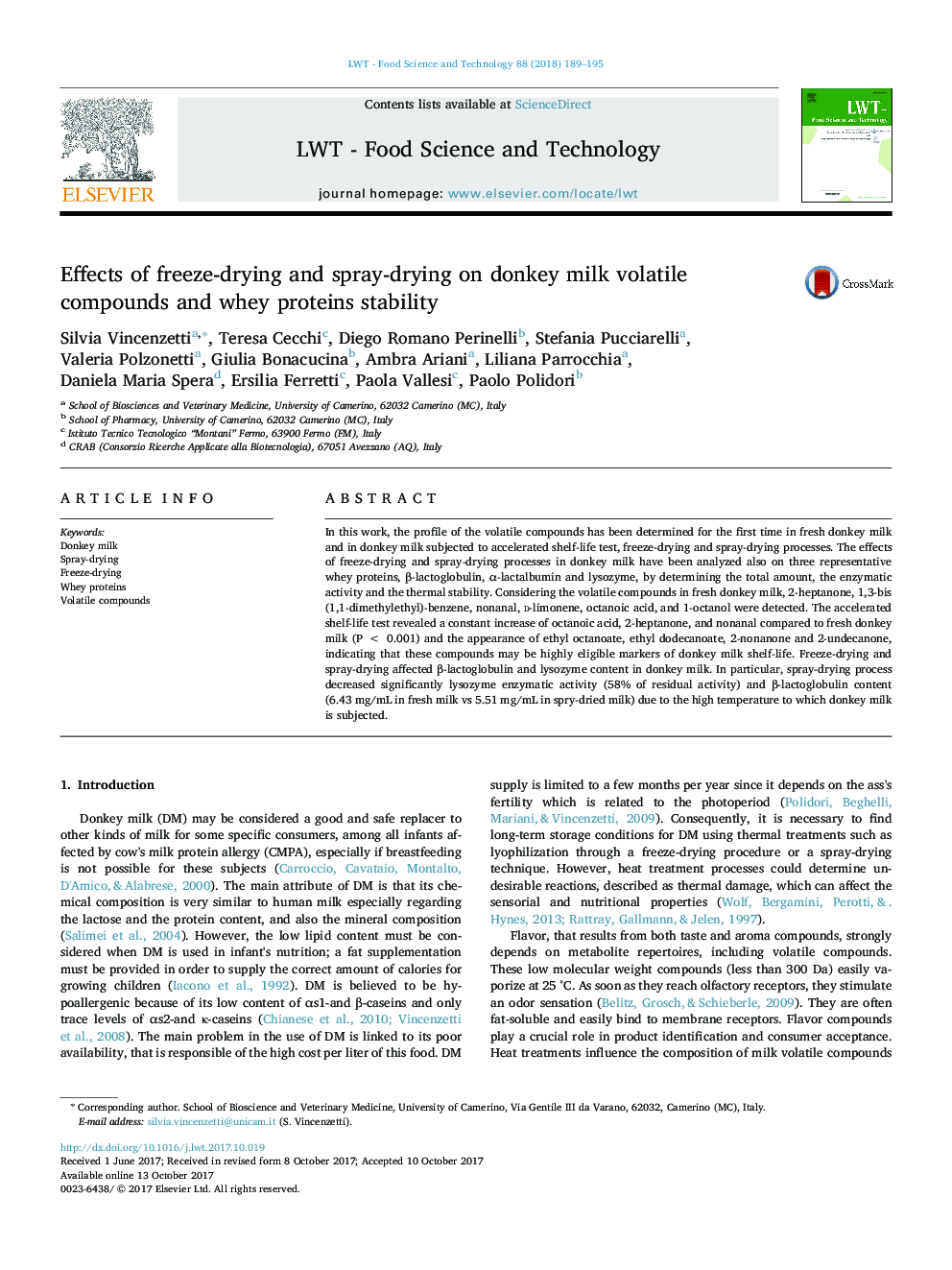| Article ID | Journal | Published Year | Pages | File Type |
|---|---|---|---|---|
| 5768372 | LWT - Food Science and Technology | 2018 | 7 Pages |
â¢Volatile compounds on donkey milk has been determined for the first time.â¢Potential markers of donkey milk shelf life have been determined.â¢Freeze-drying process does not alter donkey's milk whey protein content.â¢Spray-drying process affects lysozyme activity and β-lactoglobulin content.
In this work, the profile of the volatile compounds has been determined for the first time in fresh donkey milk and in donkey milk subjected to accelerated shelf-life test, freeze-drying and spray-drying processes. The effects of freeze-drying and spray-drying processes in donkey milk have been analyzed also on three representative whey proteins, β-lactoglobulin, α-lactalbumin and lysozyme, by determining the total amount, the enzymatic activity and the thermal stability. Considering the volatile compounds in fresh donkey milk, 2-heptanone, 1,3-bis (1,1-dimethylethyl)-benzene, nonanal, d-limonene, octanoic acid, and 1-octanol were detected. The accelerated shelf-life test revealed a constant increase of octanoic acid, 2-heptanone, and nonanal compared to fresh donkey milk (P < 0.001) and the appearance of ethyl octanoate, ethyl dodecanoate, 2-nonanone and 2-undecanone, indicating that these compounds may be highly eligible markers of donkey milk shelf-life. Freeze-drying and spray-drying affected β-lactoglobulin and lysozyme content in donkey milk. In particular, spray-drying process decreased significantly lysozyme enzymatic activity (58% of residual activity) and β-lactoglobulin content (6.43 mg/mL in fresh milk vs 5.51 mg/mL in spry-dried milk) due to the high temperature to which donkey milk is subjected.
